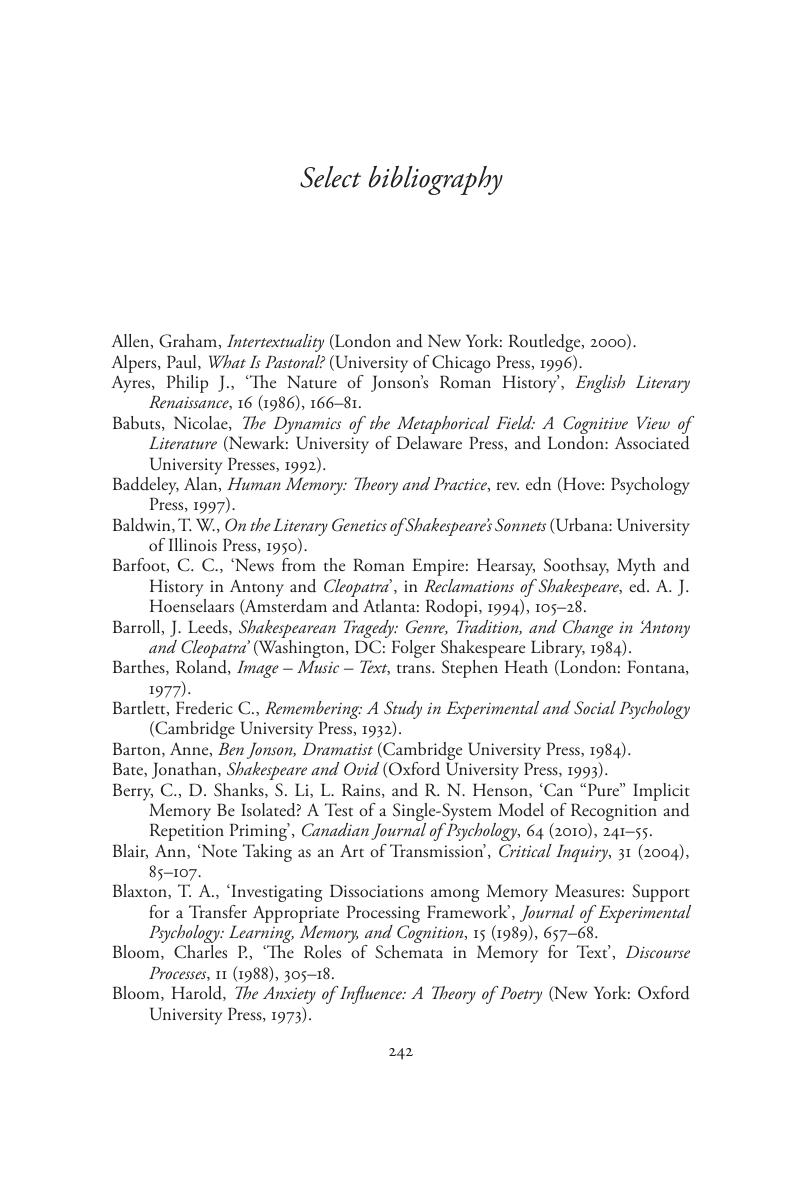Book contents
- Memory and Intertextuality in Renaissance Literature
- Memory and Intertextuality in Renaissance Literature
- Copyright page
- Dedication
- Contents
- Book part
- Note on texts
- Chapter 1 Introduction
- Part I Implicit and explicit poetic memory
- Part II Intertextuality, forgetting, and the schema
- Select bibliography
- Index
- References
Select bibliography
Published online by Cambridge University Press: 05 February 2016
- Memory and Intertextuality in Renaissance Literature
- Memory and Intertextuality in Renaissance Literature
- Copyright page
- Dedication
- Contents
- Book part
- Note on texts
- Chapter 1 Introduction
- Part I Implicit and explicit poetic memory
- Part II Intertextuality, forgetting, and the schema
- Select bibliography
- Index
- References
Summary

- Type
- Chapter
- Information
- Memory and Intertextuality in Renaissance Literature , pp. 242 - 253Publisher: Cambridge University PressPrint publication year: 2016



